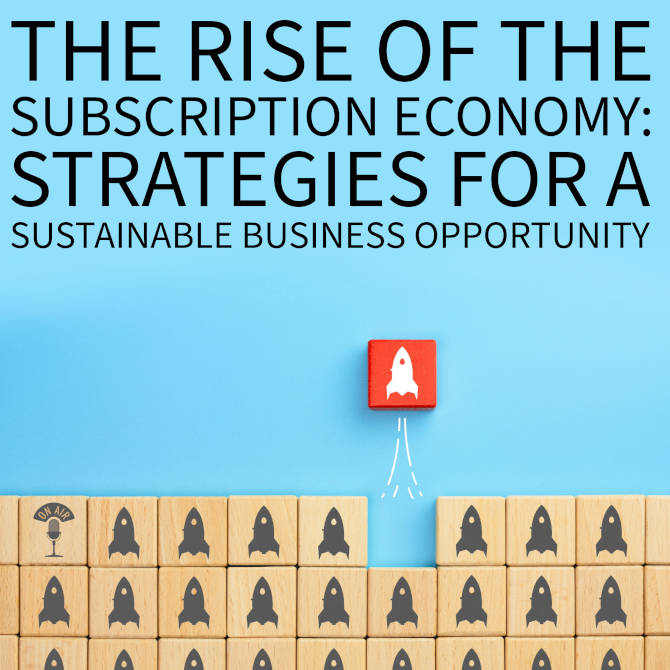Welcome to the E-Commerce Insiders Podcast, where we’ll explore the latest trends and technologies in customer engagement. I’m your host, Mark Hebblewhite, and I’m excited to dive into this topic with you. Now, my goal is to provide you with actionable insights and practical advice on how to improve your customer engagement strategy and drive better business outcomes.
So let’s get started.
Why is Customer Engagement important?
Customer engagement is a crucial aspect of business success, and it’s more important now than ever before. With the rise of technology, customers are demanding personalised and seamless experiences from social media to email to messaging apps.
There are many popular channels for engaging with customers, but with technology advancing at such a rapid pace we’re also seeing now the innovative ways to engage with customers such as virtual and augmented reality, and the use of AI to provide personalised experiences.
The impact on technology, on customer engagement, cannot be overstated.
How is Technology Affecting Customer Engagement?
Key technologies like artificial intelligence and conversational interfaces are changing the way businesses interact with their customers. Artificial intelligence, for example, is enabling businesses to provide more personalised experiences, anticipate customers’ needs and automate routine tasks. Whereas, chatbots and voice assistance are also becoming increasingly popular as they allow customers to interact with the businesses in a very convenient and natural way.
The opportunities for businesses to improve their customer engagement strategies are vast and pretty diverse.
From retail, healthcare to finance, businesses across all industries can benefit. From improving their customer engagement, the impact of customer engagement on businesses outcomes can be significant, including increased customer loyalty, higher sales, and improved brand reputation.
On other episodes of the Insiders Podcast, we’ve discussed customer loyalty and brand reputation. If you haven’t heard those, do, go have a listen.
Real-world Examples
Let’s take a look at some real world examples of successful customer engagement initiatives.
Now our first case study is about an e-commerce company who used AI to personalise their customer experience on their website.
Now by analysing customer behaviour, they were able to provide product recommendations and offer customised promotions, leading to a 20% increase in sales. That’s right, 20% increase just through implementing artificial intelligence.
Another example is a service provider who implemented a chat box to handle customer service inquiries. By automating this routine task and providing 24/7 support, they were able to reduce response times by 75% and improve their customer satisfaction by 30%. These are amazing figures. You might be wondering how to measure the impact of your customer engagement initiative on response times and customer satisfaction.
Well, there are a few ways to do this.
Ways to Measure Customer Engagement Initiatives
One option is to conduct customer satisfaction surveys and gather direct feedback from your customers on their experience with your brand.
Another way is to track metrics such as average resolution time and net promoter score to get a quantitative measure of response times and customer satisfaction.
Additionally, examining specific customer interactions or case can provide a deeper understanding of the customer experience and what’s working well and not. And finally, user testing with a small group of customers can give you a first-hand look at the impact of your initiatives, help you identify areas for improvements.
By combining all of these methods, you can get a comprehensive understanding of how your customer engagement initiatives are, impact in response times, and customer satisfaction, and make more informed decisions about how to improve in the future.
Useful Tools
Here’s an example of tools that can be used to analyse response times and improve customer satisfaction. Now, I’m not affiliated with any of these companies I’m going to mention, and there are many tools out there that are equally as good.
So, let’s say for example, there’s a company selling home appliances and they wanted to improve their customer engagement, increase their customer satisfaction to do this, they use the following tools.
Survey Monkey for Customer Satisfaction surveys. Now, Survey Monkey’s ideal in conducting customer satisfaction surveys and gathers direct feedback from the customers on their experience with the brand. This can be done directly through the websites, and I would recommend offering some form of enticements offering to get the customer to complete the survey.
The next hub would be to use Zendesk metrics, which enables you to track response times and measure the impact of customer engagement initiatives on the metric that you provided. And then you would utilise something like Qualtrics, which is great for testing customer engagement initiatives, using a small group of customers, and get first-hand insights into the impact on response times and customer satisfaction.
We cannot leave out Google Analytics to track website traffic, customer behaviour, and customer satisfaction on their website. This provided valuable insights into the overall customer experience and how it is impacting their customer’s engagement initiatives.
By using these tools, the company was able to get a comprehensive understanding of the impact of their customer engagement initiatives on response times and customer satisfaction and make informed decisions about how to further improve the customer experience.
Okay.
Time for a recap.
So, we understand that customer engagement is an essential component for any business, and let’s start using technology such as AI and conversional interfaces to help you transform your business to engage with customers on a better front. There are many ways and opportunities for business to improve their customer engagement strategies and drive better outcomes. All I can really say is that customer engagement looks bright and is exciting to see how businesses are utilising these technologies to improve the customer experience.
So let’s keep striving for better customer engagement.
Well, that’s a wrap for today’s episode. We hope you enjoyed E-Commerce Insiders podcasts and have gained valuable insights and ideas for improving your customer engagement strategy. If you wanna learn more about the topic, be sure to subscribe and follow us on our social media channels.
In our next episode, we’ll be diving into the impact of AI and customer service, so stay tuned. Until then, remember, the key to successful customer engagement is understanding your customers and providing them with the best possible experience.
Thanks for listening, and we’ll see you next time.











